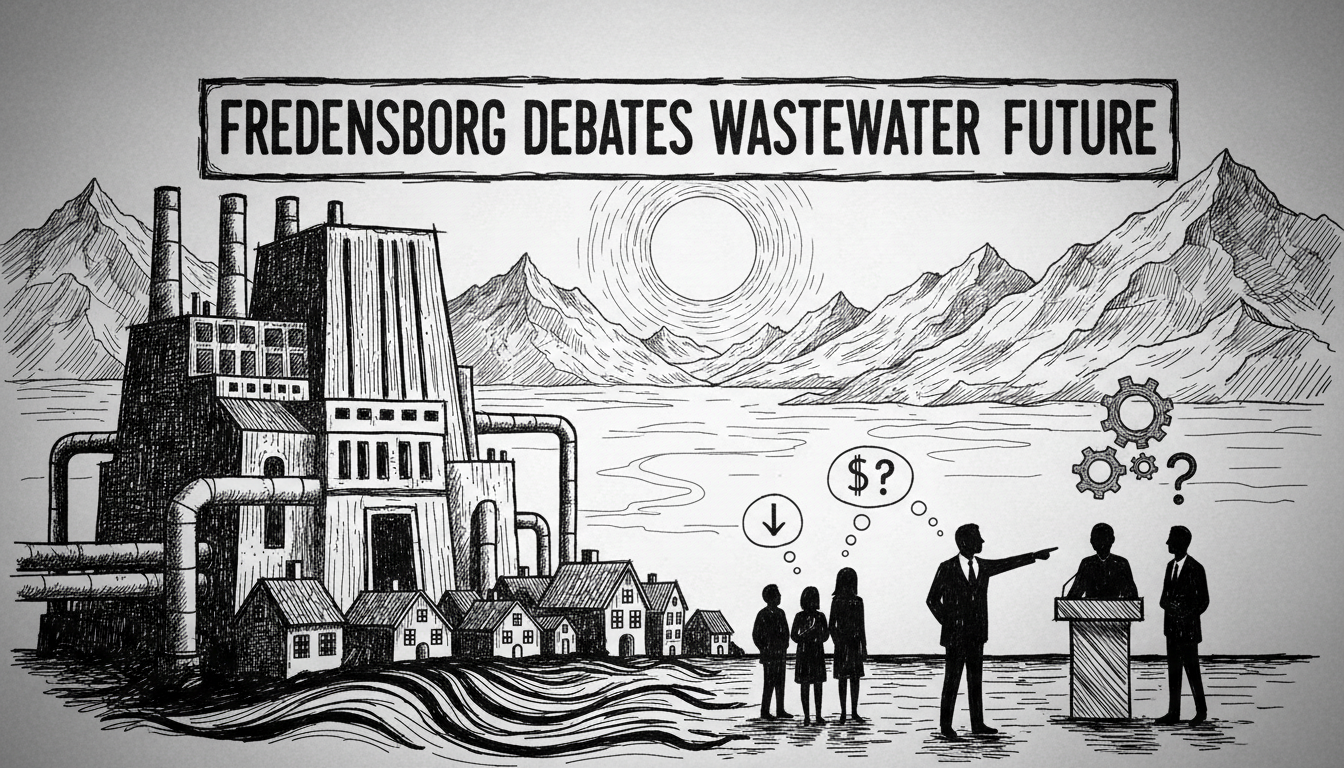Fredensborg Municipality faces a critical infrastructure decision that could reshape its environmental and political landscape. Local residents and politicians are debating whether to build a massive regional wastewater treatment facility serving five municipalities or develop a smaller local solution. The proposed plant would cover approximately ten hectares, equivalent to fourteen football fields, on land already purchased near Kokkedal.
Residents living near the proposed site express strong concerns about property values and visual impact. Hans Toft Pedersen states his view would deteriorate and his house value would drop. He says the political stance on this issue will determine his vote in the upcoming municipal election. Nearby resident Michael Cramer Andersen calls the project fundamentally flawed from start to finish.
The facility, officially named Water Resource Center Øresund, would replace eleven existing treatment plants across Fredensborg, Hørsholm, Allerød, Rudersdal, and Furesø municipalities. Local couple Sabrina and Jacob Vestergaard question why waste from Lynge in Allerød should be pumped to their community. They emphasize the area's unique natural beauty requires protection.
Political parties present differing visions for wastewater management. The Social Democrats highlight potential economies of scale through regional cooperation. Council member Carsten Nielsen notes shared operational costs could provide rational benefits but acknowledges missing data requires further examination. The party recognizes existing treatment plants cannot meet upcoming environmental standards.
The Liberal Party advocates for local solutions instead. Council member and lead candidate Mie Stattau proposes Fredensborg should handle its own wastewater like neighboring Hillerød. She emphasizes this approach would avoid laying seventy kilometers of pipeline and minimize environmental disruption. Stattau acknowledges any location will affect neighbors but commits to finding the most suitable site.
This debate reflects broader tensions in Danish municipal governance between regional efficiency and local autonomy. Municipal elections often determine specific infrastructure projects rather than just political leadership. The wastewater treatment decision demonstrates how environmental policy, property values, and inter-municipal cooperation intersect in Scandinavian urban planning.
The controversy also highlights Denmark's ongoing transition toward more centralized public services. Many smaller municipalities struggle to maintain independent infrastructure while meeting European Union environmental directives. The current discussion in Fredensborg mirrors similar debates occurring across Scandinavia as communities balance cost efficiency with local control.
Resident Martin Kørner represents a pragmatic middle ground. While not enthusiastic about the proposed location, he acknowledges the economic logic of centralized treatment over multiple small facilities. His perspective captures the difficult trade-offs communities face when implementing essential but unpopular infrastructure projects.
The November election will likely determine the project's future. Voters must weigh environmental benefits against local impacts and consider whether regional cooperation serves their community's best interests. The outcome could influence wastewater management approaches throughout the greater Copenhagen region for decades.

